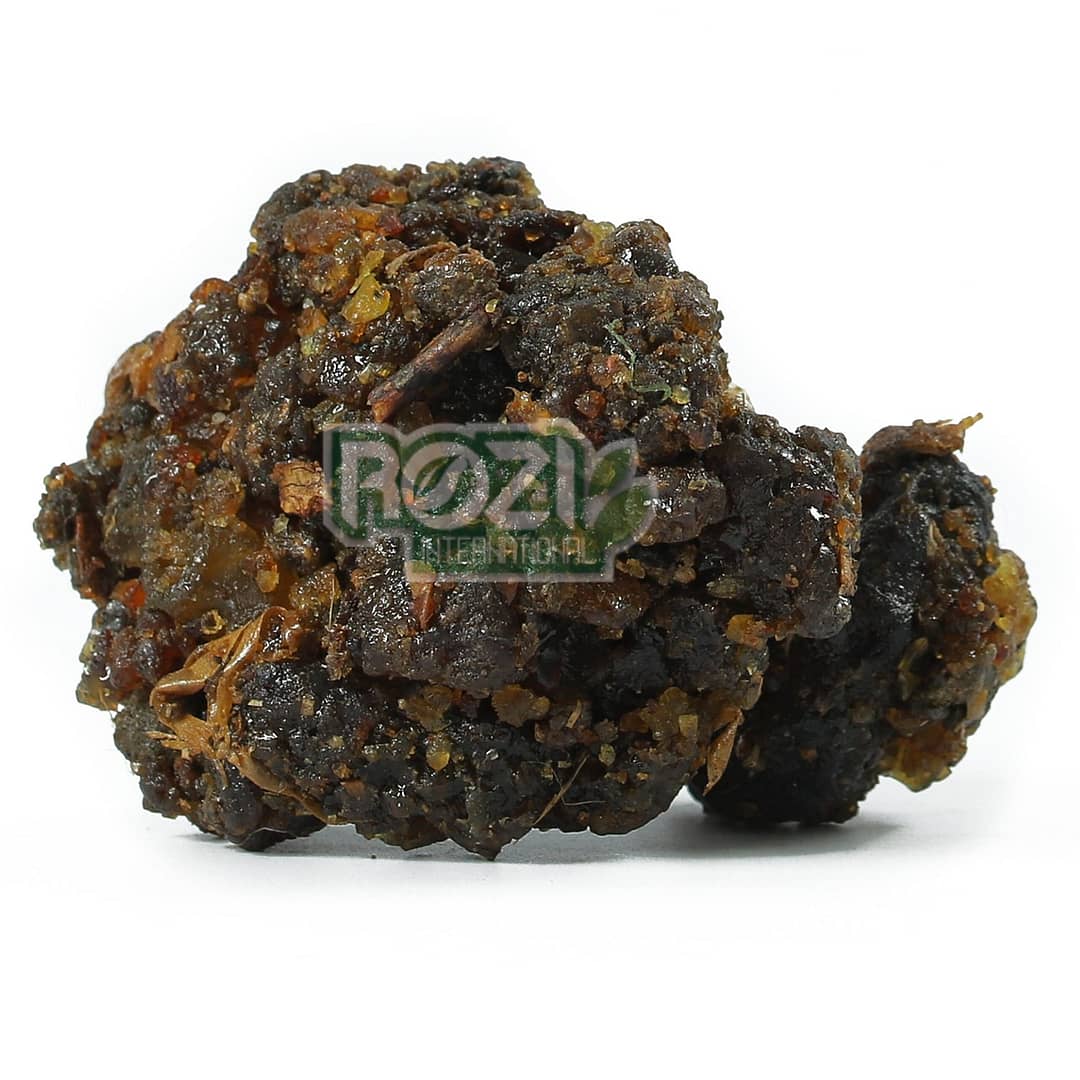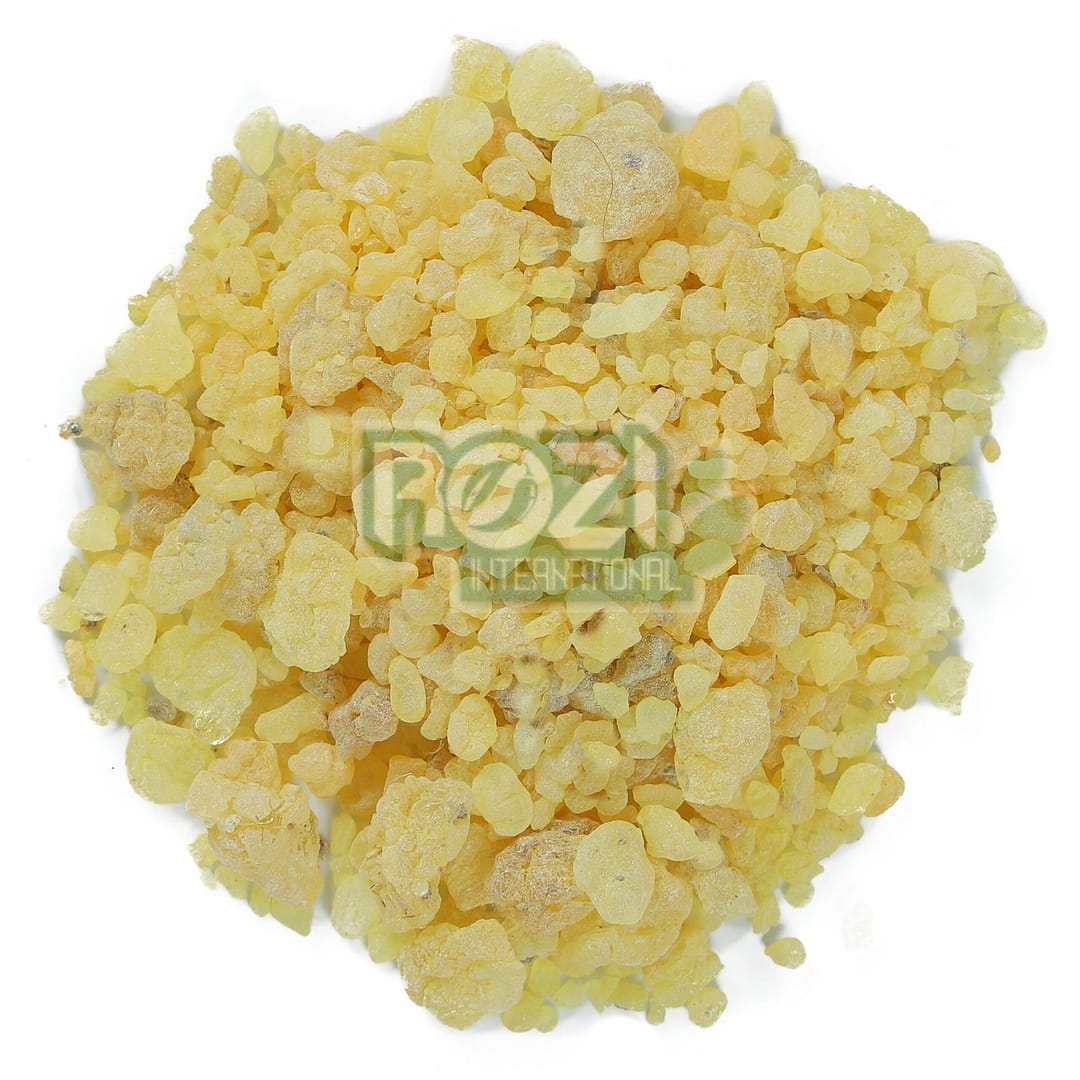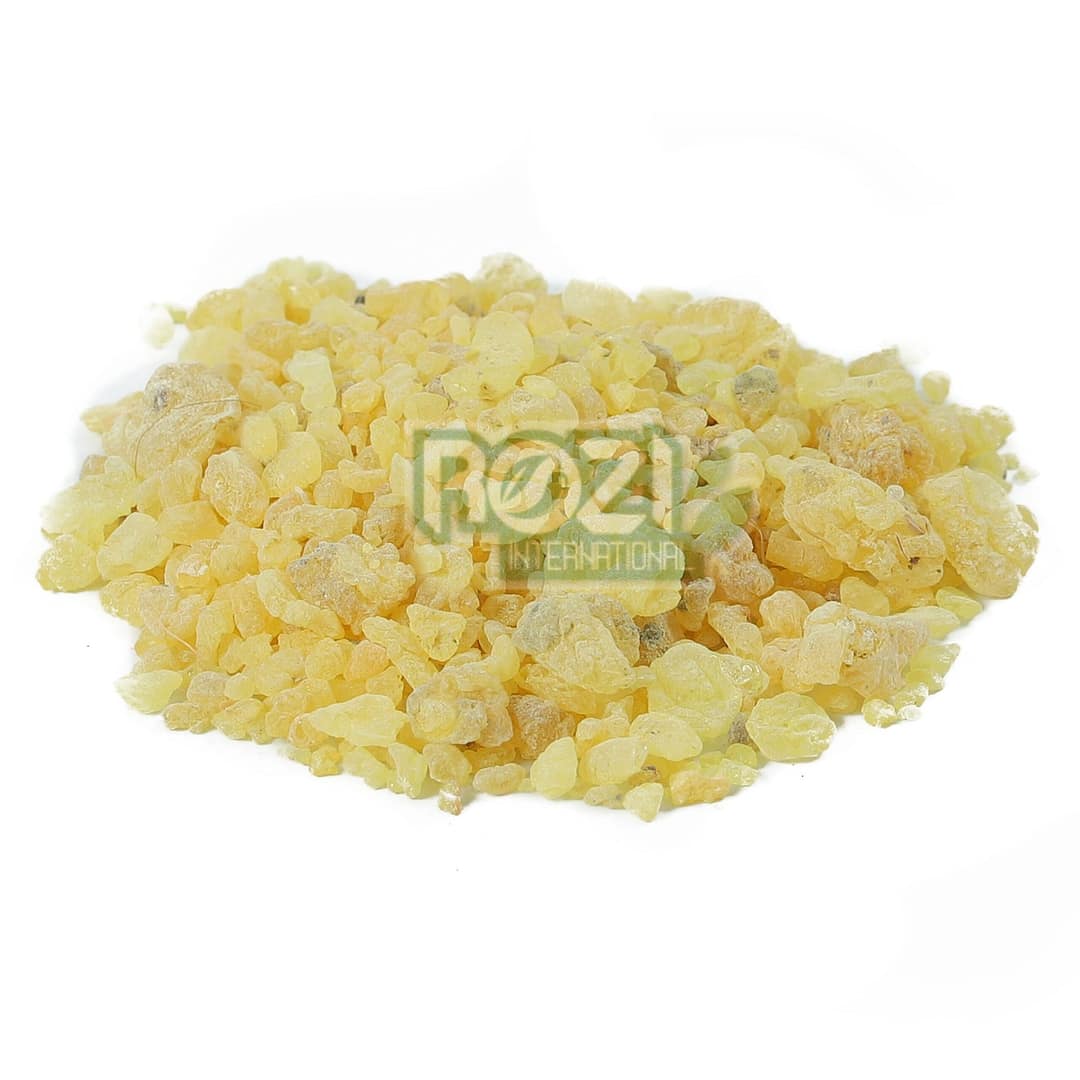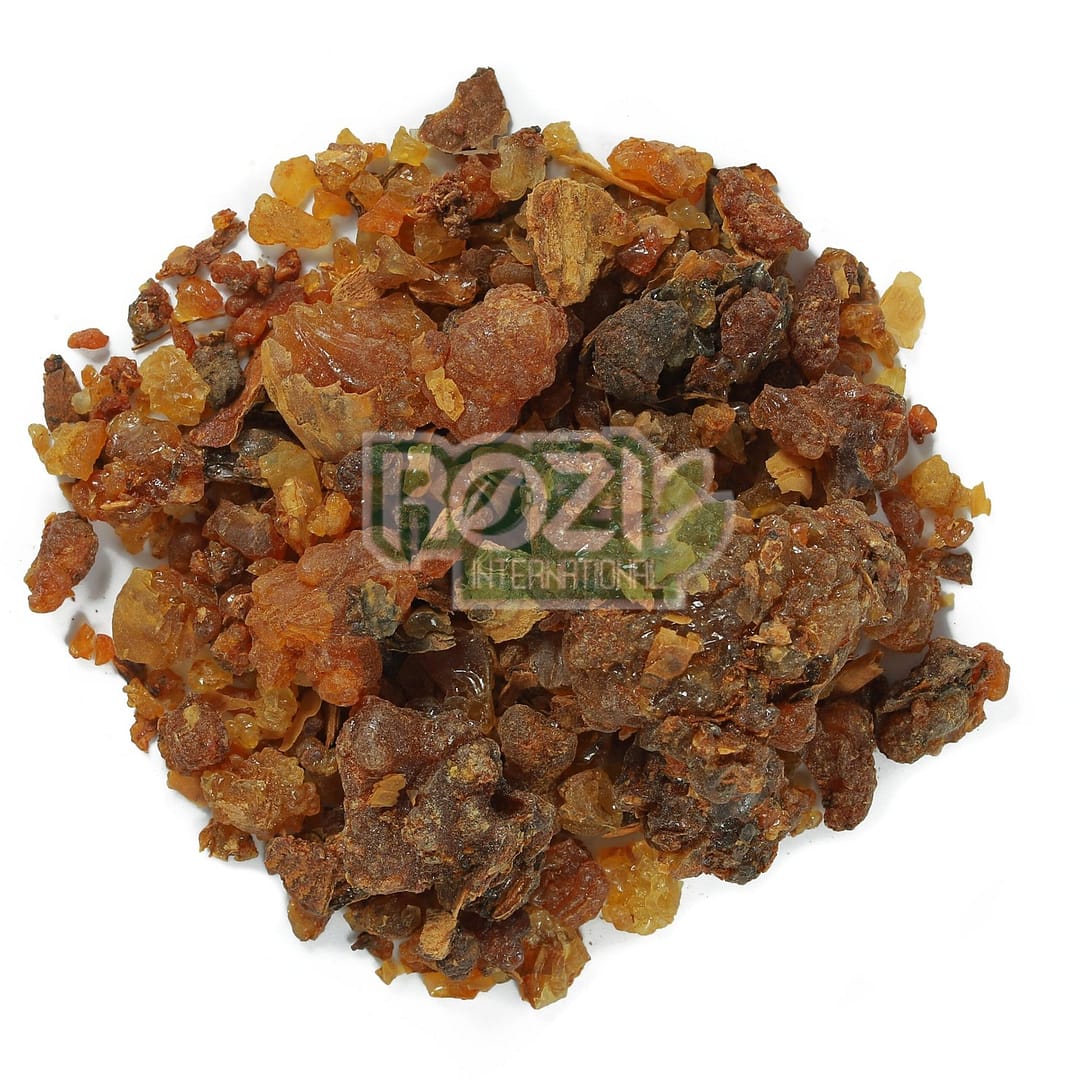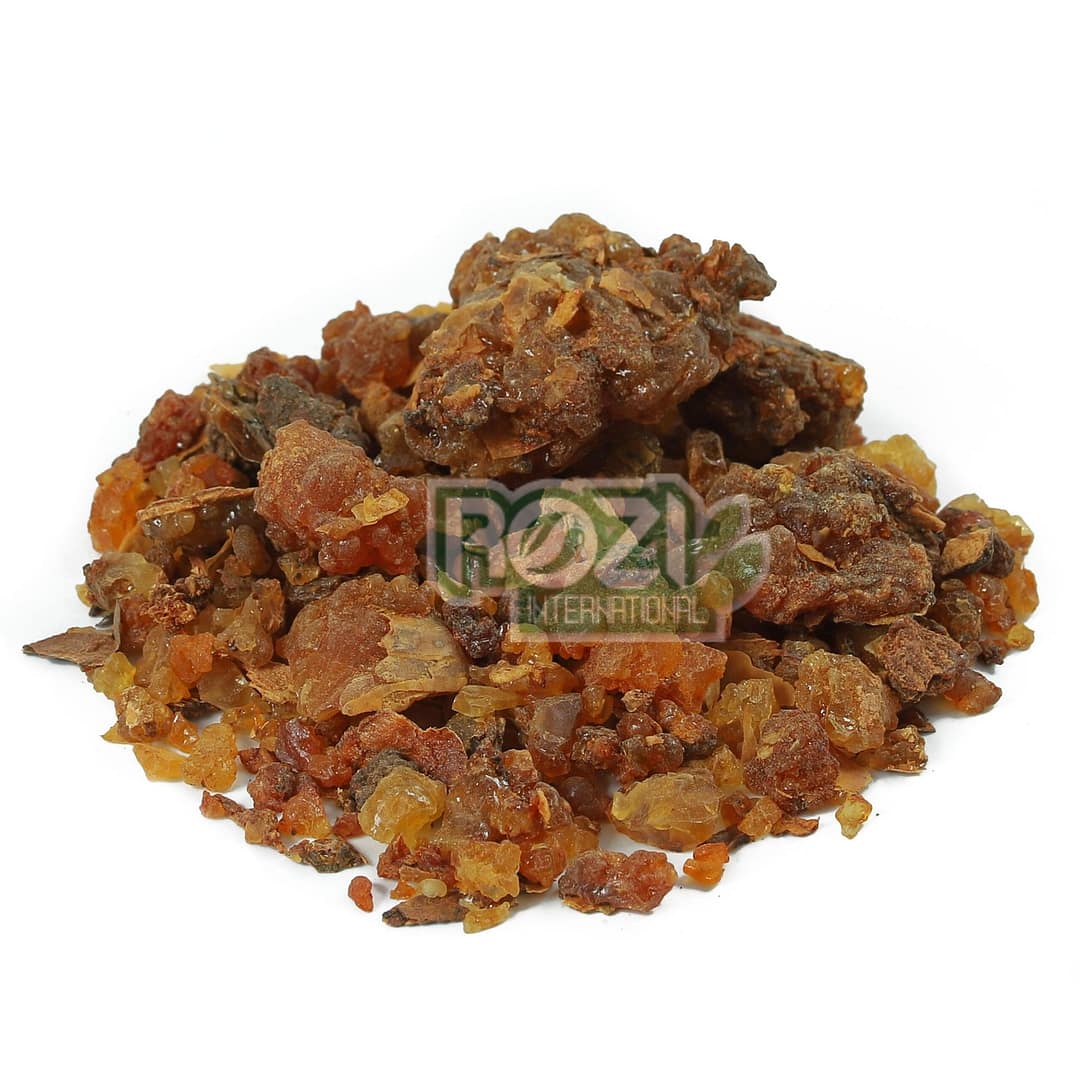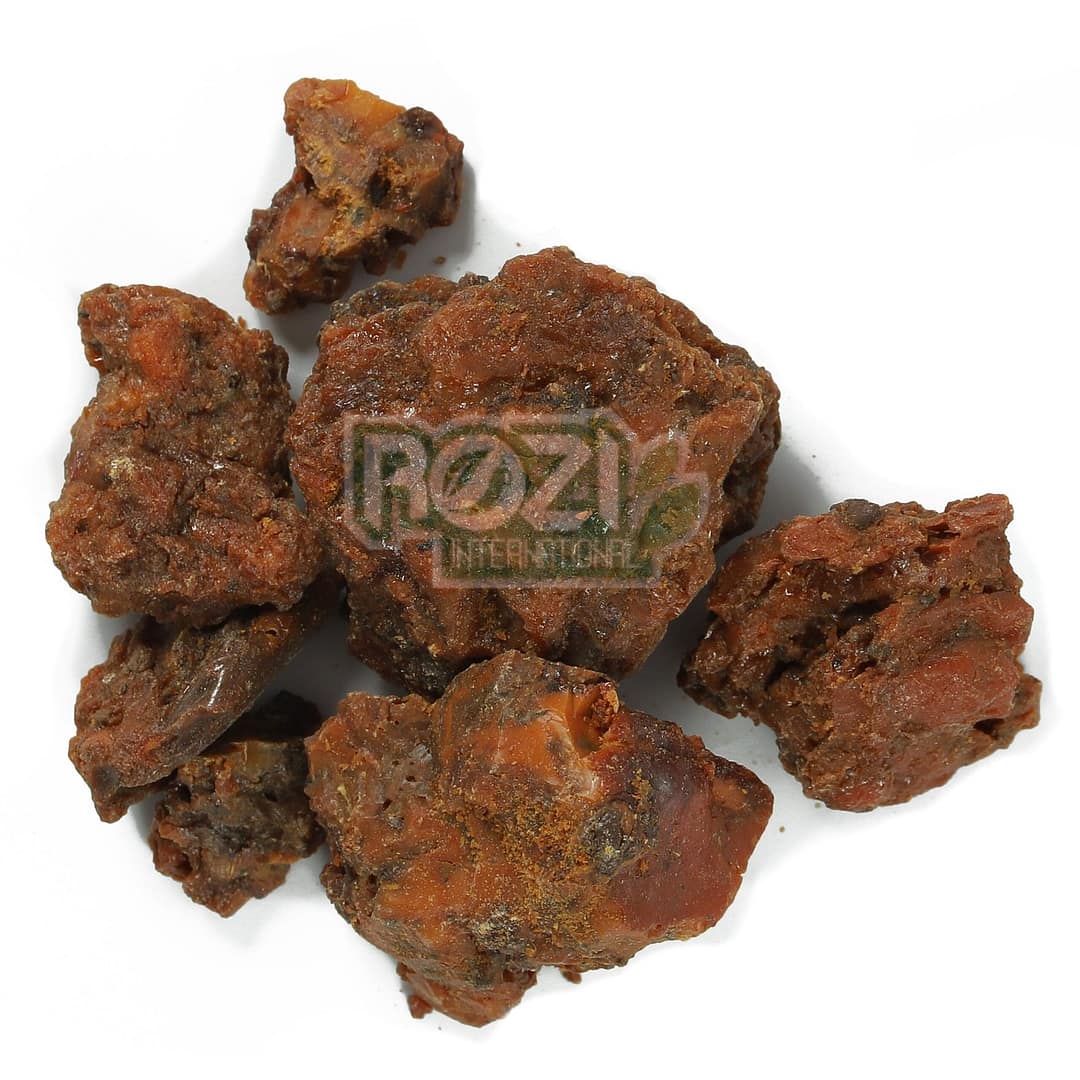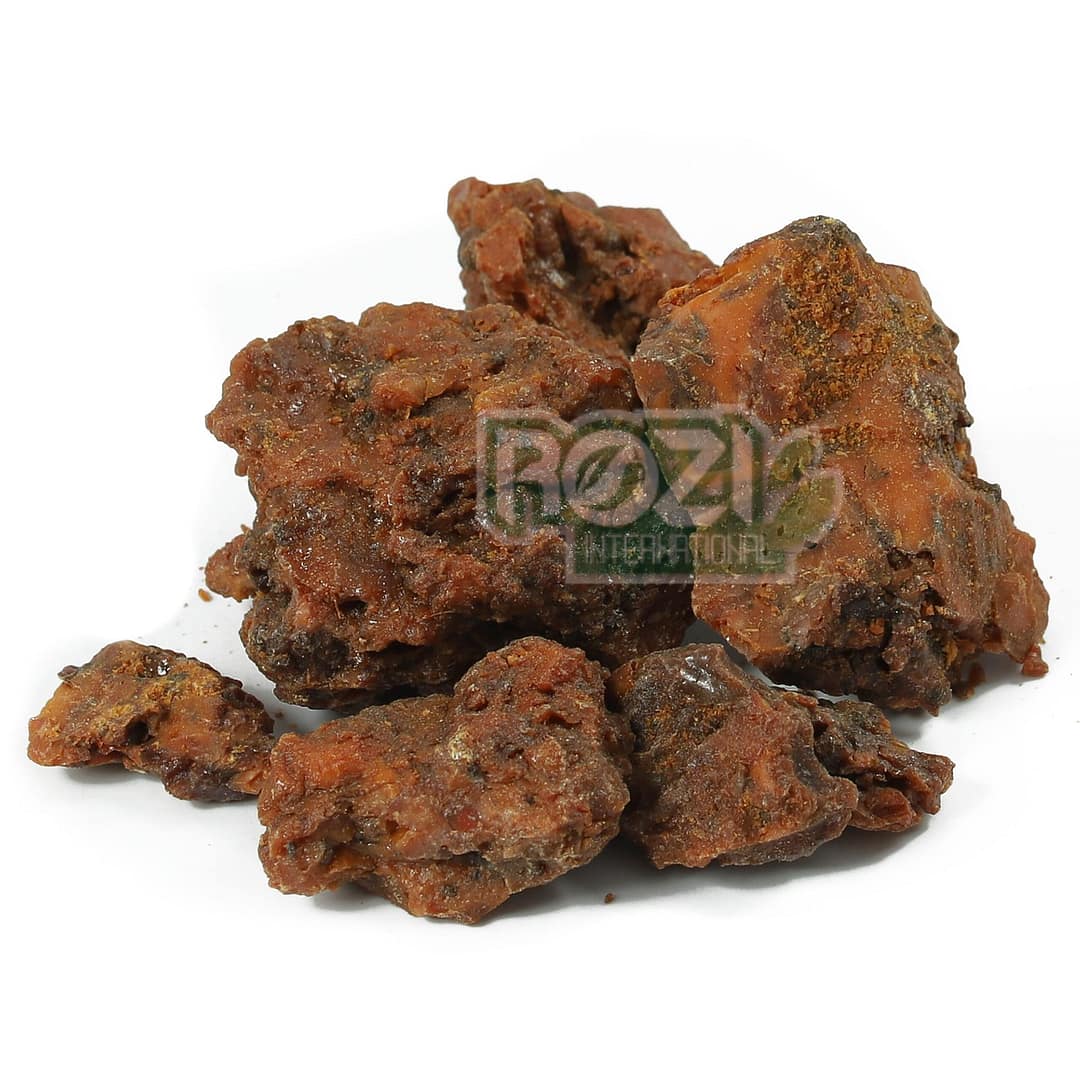Guggal Gum / Commiphora Wightii / Guggal
English Name: Guggal Gum
Botanical Name: Commiphora Wightii
Local Name: Guggal
Product Description
Guggul is made from the sap (gum resin) of the Commiphora mukul tree, which is native to India. This tree has been used in Ayurvedic medicine for centuries, and Ayurvedic texts dating back to 600 BC recommend it for treating atherosclerosis. Today guggul gum resin is used for arthritis, lowering high cholesterol, “hardening of the arteries” (atherosclerosis), acne and other skin diseases, and weight loss.
Guggal Gum, derived from the resin of the Commiphora mukul tree, is a highly valued natural product with a rich history in traditional medicine and Ayurveda. Known for its therapeutic properties, Guggal Gum is widely used to support joint health, promote healthy cholesterol levels, and enhance metabolic function. It contains bioactive compounds like guggulsterones, which are celebrated for their anti-inflammatory and antioxidant effects. This versatile gum is also a common ingredient in skincare products, as it helps improve skin tone and combat signs of aging. With its natural origin and numerous health benefits, Guggal Gum remains a trusted remedy for overall wellness and vitality.
Silk Cotton Tree Gum/ Salmalia Malabaricum/ Mochras Gum
English Name: Silk Cotton Tree Gum / Mochras Gum
Botanical Name: Salmalia Malabaricum
Local Name: Mochras Gum
Product Description
Machras gum is chtained from the Romhay coiha tree which grows in India South Fast Asia and some narts of South Africa like Mochras gum is obtained from the Bombax ceiba tree which grows in India. South East Asia and some parts of South Africa. Like other trees of the same family or genus it is also well known as The Cotton Tree. but it is also sometimes known as The Red Silk Cotton Tree or simply Red Cotton Tree; sometimes as Silk Cotton Tree or Kapok tree both of which may also refer to Ceiba pentandra.
Silk Cotton Tree Gum, extracted from the bark of the Silk Cotton tree (Bombax ceiba), is a natural resin known for its unique properties and traditional uses. This gum has been valued for its soothing and healing qualities, particularly in folk medicine. Rich in natural fibers and compounds, it is often used in various wellness applications, including as a remedy for respiratory issues, digestive support, and skin irritations. The gum is also known for its ability to act as a mild astringent and anti-inflammatory, making it a popular choice in herbal treatments. With its natural origin and versatility, Silk Cotton Tree Gum continues to be appreciated for its health benefits and its role in traditional medicine.
Mastic Gum/ Pistacia Lentiscus / Mustagi
English Name: Mastic Gum / Mustagi
Botanical Name: Pistacia Lentiscus
Local Name: Mustagi
Product Description
Mastic gum (also called Mastagi Roomi) is plant resin (sap) from the trunk of Pistacia Lentiscus. In Ayurveda and Unani medicine, it is widely used for its ulcer healing, antispasmodic and aphrodisiac action. It reduces menstrual pains and muscular pains. It is useful for the treatment of heartburn, gastritis, ulcers and indigestion.
Mastic Gum is a natural resin harvested from the sap of the mastic tree (Pistacia lentiscus), native to the Mediterranean region. Known for its distinct, slightly pine or cedar-like flavor, Mastic Gum has been prized for centuries for its medicinal, culinary, and cosmetic uses. In traditional medicine, it is recognized for its antibacterial, anti-inflammatory, and antioxidant properties, making it beneficial for digestive health, oral hygiene, and skin care. Mastic Gum is often used to help soothe stomach issues, such as ulcers and indigestion, and is also a popular ingredient in natural toothpaste and mouthwashes due to its ability to support oral health. Additionally, its unique aroma and flavor make it a valued ingredient in Mediterranean cuisine and perfumes. With its rich history and wide range of uses, Mastic Gum remains a treasured natural product for promoting overall health and wellness.
Myrrh Gum/ Commiphora Myrrha / Murmaki
English Name: Myrrh Gum
Botanical Name: Commiphora Myrrha
Local Name: Murmaki
Product Description
Best known as one of the gifts brought to the infant Jesus, myrrh resin has a sweet, woodsy fragrance that’s been used as incense
for millennia. These dried resin pieces can be smoked in a brazier or censor, or in your wood-burning fireplace, for a wonderful sweet aroma.
Myrrh Gum is a resin obtained from the bark of the Commiphora species, particularly Commiphora wightii, and has been used for thousands of years for its aromatic, medicinal, and spiritual properties. Known for its warm, earthy fragrance, Myrrh Gum has been a key ingredient in incense, perfumes, and religious ceremonies throughout history. It is highly regarded for its therapeutic benefits, including its anti-inflammatory, antiseptic, and antioxidant properties, making it effective in promoting oral health, healing wounds, and supporting immune function. Myrrh is also used in skincare for its ability to soothe irritated skin and improve complexion. Its rich, versatile nature continues to make it a valuable component in traditional medicine and holistic wellness practices.
Gum Karaya/ Sterculia Urens / Masura Karaya
English Name: Gum Karaya
Botanical Name: Sterculia Urens
Local Name: Masura Karaya
Product Description
Gum Karaya has been used for many centuries in traditional African and Asian cooking. Nowadays, karaya gum is an additive used
in the food and pharamceutical industries, and it is known to be a clean label additive with an excellent digestive tolerance, as it is
a soluble fiber.
Masura Karaya, also known as Sterculia Gum or Karaya Gum, is a natural plant-derived resin obtained from the Sterculia tree. Known for its versatility, it is widely used in the food, pharmaceutical, and cosmetic industries. In food, Masura Karaya acts as a thickening, stabilizing, and emulsifying agent in products like sauces, dressings, and desserts. In pharmaceuticals, it is valued for its gentle laxative properties and is commonly used in formulations to support digestive health. Additionally, Masura Karaya is a key ingredient in skincare products due to its soothing and hydrating effects on the skin. With its natural origin, biodegradability, and wide range of applications, Masura Karaya is a highly regarded ingredient in both traditional and modern industries.
Gum Arabic / Acacia Senega / Gond Kikar
English Name: Gum Arabic
Botanical Name: Acacia Senegal
Local Name: Gond Kikar
Product Description
Exceptionally hard to find ingredient – hard harvested Gum Arabic crystals. Easy to use, and without a carrier has pure fine taste.
Gum Arabic, also known as Acacia Gum, is a natural resin derived from the sap of Acacia trees, particularly Acacia senegal and Acacia seyal. Renowned for its versatility, it is widely used in food, pharmaceuticals, cosmetics, and industrial applications. In the culinary world, Gum Arabic serves as a stabilizer, emulsifier, and thickening agent in products like beverages, candies, and baked goods. It is also celebrated for its health benefits, as it is rich in dietary fiber, promoting digestive health and supporting gut microbiota. Additionally, Gum Arabic is used in pharmaceuticals to bind pills and in skincare products for its soothing and hydrating properties. With its natural origin and multifunctional uses, Gum Arabic is an indispensable ingredient across various industries.
Asafoetida/ Ferula assa-foetida / Hing
English Name: Asafoetida
Botanical Name: Ferula assa-foetida
Local Name: Hing
Product Description
Asafoetida, scientifically known as Ferula assa-foetida, is a pungent spice derived from the resinous sap of the roots and stem of a species of Ferula, a perennial herb native to Afghanistan and Iran. Commonly used in Indian, Middle Eastern, and Central Asian cuisines, asafoetida is renowned for its strong, unique flavor and aroma.
In its raw form, asafoetida has a strong, unpleasant smell, often described as sulfurous or garlicky. However, when cooked, its flavor transforms, adding a savory, umami, and slightly bitter taste to dishes. Due to its potent aroma and taste, asafoetida is used sparingly, typically in powdered or granulated form, to enhance the flavor of curries, lentil dishes, pickles, and other vegetarian recipes.

